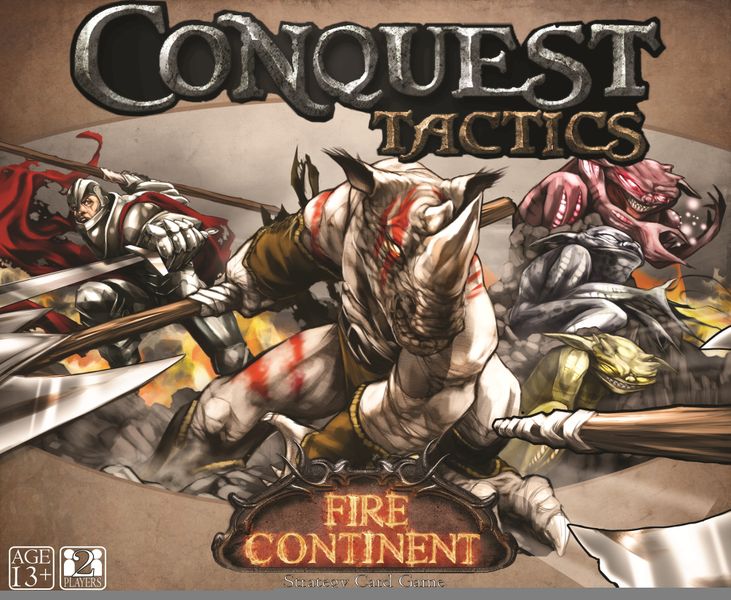Conquest Tactics (2011) Board Game
Conquest Tactics is a card game released in 2011, designed by Don Aguillo, Rodrigo Salazar, Raf Salazar, and Jesse Young. It falls into the categories of card game, fantasy, and wargame, and is recommended for players aged 13 and above. The game features action points and hand management as its main gameplay mechanisms.
Game Components of Conquest Tactics
– Faction decks (humans, the malice, and kaborha)
– Units, spells, skills, and base cards
– 5×5 grid map
– Card boxes and a flimsy game box
– Rules manual
How To Setup Conquest Tactics
To set up Conquest Tactics, players first choose a faction deck and start with 20 points worth of low-level units, spells, skills, and their base. The remaining 60-card deck is shuffled and becomes the draw pile. Each player sets aside their four victory conditions and three trophies. The initial units are deployed in the first two rows on each player’s side of the 5×5 grid map. After deployment, each player draws five cards to begin the game.
Gameplay Mechanics and Game Objective
– Action Points
– Hand Management
– Lead units to attain three of your victory conditions before your opponent.
– Each turn follows the TRIUMPH sequence: Tactical Points, Initiative, Ranged, Unit Movement, Infiltration, Undercover, Move, and Phase End.
– Manage tactical points to mobilize units and discard cards for additional points.
– Level up units to increase their power, but reduce the number of units on the board.
Player Experience
Conquest Tactics offers a strategic and engaging experience with meaningful decisions at every turn. Players must carefully manage their tactical points and unit levels, balancing power with numbers. The game is expandable but not collectible, allowing players to pick up the starter set and enjoy the full game without needing additional purchases.
Pros
Cons
Personal Thoughts on Conquest Tactics
Conquest Tactics is ideal for fans of strategic card games who enjoy deep gameplay mechanics and meaningful decisions. It is particularly suited for those who prefer games without dice rolls, focusing instead on card management and strategy. The game’s balance and expandability make it a good choice for players looking for a game that can be enjoyed multiple times without becoming repetitive. However, the quality of some components and the initial learning curve might be a minor deterrent for some players.
We are supported by our audience. When you purchase through links on our site, we may earn an affiliate commission, at no extra cost for you. Learn more.

